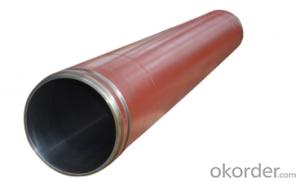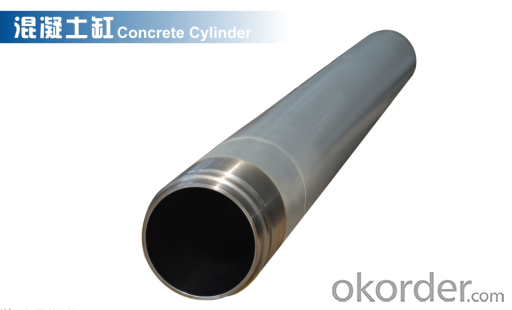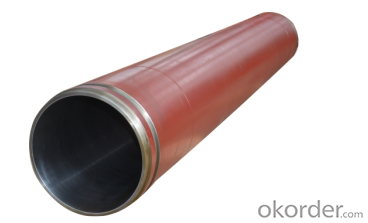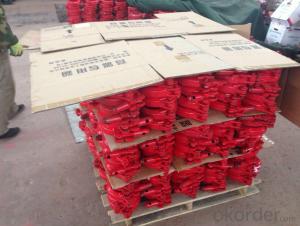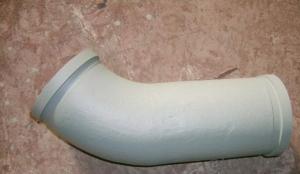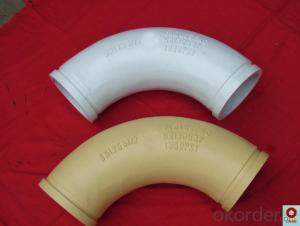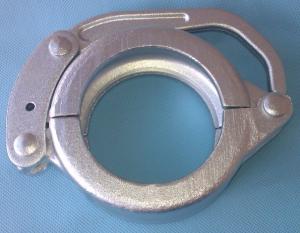DELIVERY CYLINDER(SANY ) I.D.:DN230 CR. THICKNESS :0.25MM-0.3MM LENGTH:2146MM
- Loading Port:
- Shanghai
- Payment Terms:
- TT OR LC
- Min Order Qty:
- 2 pc
- Supply Capability:
- 1000 pc/month
OKorder Service Pledge
Quality Product, Order Online Tracking, Timely Delivery
OKorder Financial Service
Credit Rating, Credit Services, Credit Purchasing
You Might Also Like
Packaging & Delivery
| Packaging Detail: | wooden case, seaworthy packing |
| Delivery Detail: | 15 days |
Specifications
1. Capacity: 60,000~80,000cbm
2. Size: DN180, DN200, DN230..
4. Brand: PM, Sany,ZM
1. Material: C45
2. quenching and tempering to improve the hardness to HB241-280
3. inner wall chrome thickness is 0.25-0.30mm, hardness HV820-900.
4. Brand: SCHWING, PM, SANY, KYOKUTO, CIFA
5. Capacity: 60,000~80,000cbm
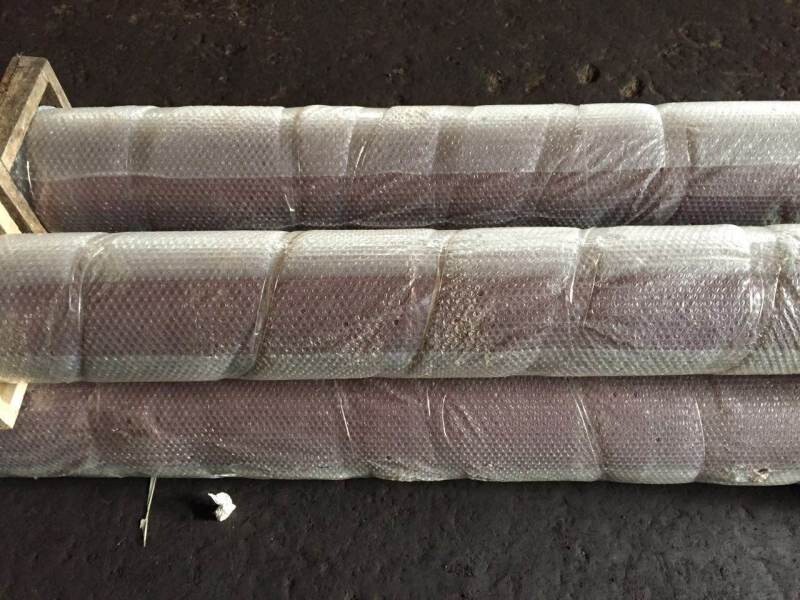


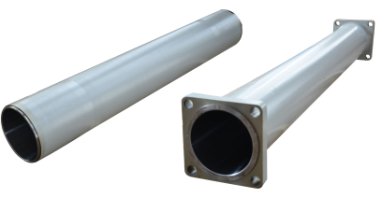
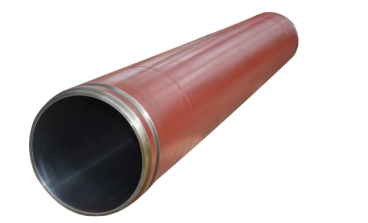
- Q: Are there any specific guidelines for the disposal of old or damaged concrete pump spare parts?
- Yes, there are specific guidelines for the disposal of old or damaged concrete pump spare parts. It is important to properly dispose of these parts to ensure environmental sustainability and to adhere to local regulations. Here are some guidelines to follow: 1. Identify hazardous materials: Before disposing of any concrete pump spare parts, it is crucial to determine if they contain any hazardous materials such as oils, lubricants, or chemicals. These substances require special handling and cannot be disposed of in regular waste streams. 2. Separate recyclable materials: If the spare parts are made of materials that can be recycled, such as metal or plastic, it is recommended to separate them from other waste. Recycling these materials helps in conserving resources and reducing the strain on landfill sites. 3. Contact local waste management authorities: Different regions have different guidelines and regulations for the disposal of specific materials. It is advisable to get in touch with the local waste management authorities to understand the proper procedures for disposing of concrete pump spare parts in your area. 4. Arrange for proper disposal: Once you have identified any hazardous materials and separated recyclable parts, arrange for their proper disposal. This may involve contacting specialized waste management companies that can handle hazardous materials or taking them to designated recycling centers. 5. Avoid illegal dumping: It is essential to avoid illegal dumping of old or damaged concrete pump spare parts. This can harm the environment and may result in fines or penalties. Always dispose of these parts through legal and responsible channels. By following these guidelines, you can ensure the proper disposal of old or damaged concrete pump spare parts, minimize the impact on the environment, and comply with local regulations.
- Q: How often should hopper grate clamps be inspected or replaced in a concrete pump?
- Regular inspections of hopper grate clamps in a concrete pump are essential to ensure they are functioning correctly. It is recommended to inspect them on a monthly basis. However, the frequency of inspection may vary based on how frequently the pump is used and the operating conditions it is subjected to. If the concrete pump is used extensively or exposed to harsh environments, more frequent inspections may be needed, such as every two weeks or even weekly. Conversely, if the pump is used infrequently or operates in less demanding conditions, inspections can be done less frequently, such as every two to three months. The objective of these inspections is to detect any signs of wear, damage, or deterioration in the hopper grate clamps. Any loose or worn-out clamps should be replaced promptly to prevent accidents or interruptions during concrete pumping operations. Ensuring the hopper grate clamps are in good condition is crucial for safety and to effectively secure the hopper grate, preventing any undesired material spillage. By conducting regular inspections and timely replacements of hopper grate clamps, the efficiency and reliability of the concrete pump can be maintained. This will ensure uninterrupted operation and minimize the risk of potential issues.
- Q: How can I minimize downtime during the replacement of concrete pump spare parts?
- Minimizing downtime during the replacement of concrete pump spare parts requires careful planning and efficient execution. Here are a few strategies that can help you achieve this: 1. Regular maintenance: Implement a proactive maintenance schedule to identify and replace worn-out parts before they fail. Regularly inspecting the concrete pump and its components can help prevent unexpected breakdowns and reduce downtime. 2. Stock up on spare parts: Keep an inventory of commonly required spare parts, such as seals, filters, and hoses. Having these items readily available can significantly reduce the time spent on sourcing and ordering parts when a breakdown occurs. 3. Partner with reliable suppliers: Establish a relationship with reliable suppliers who can provide high-quality spare parts quickly. This ensures that you have access to the required parts promptly, minimizing the waiting time for delivery. 4. Train your team: Provide training to your maintenance and operational staff on how to identify, troubleshoot, and replace concrete pump spare parts efficiently. Equipping your team with the necessary skills will enable them to address issues promptly, reducing the overall downtime. 5. Plan maintenance during downtime: Schedule maintenance and replacement of spare parts during periods of low demand or downtime. This could be during weekends, holidays, or slower construction phases. Planning the work strategically ensures that it has minimal impact on ongoing projects. 6. Optimize workflow: Streamline your maintenance process by identifying areas that cause delays or bottlenecks. Look for opportunities to improve efficiency, such as optimizing the layout of spare parts, tools, and equipment, or implementing standardized procedures for repair and replacement. 7. Use technology: Leverage technology to monitor the performance and condition of your concrete pump. Implementing a condition monitoring system can help detect early signs of potential failures, allowing you to plan for maintenance and part replacement in advance. By implementing these strategies, you can minimize downtime during the replacement of concrete pump spare parts, ensuring uninterrupted operations and maximizing productivity.
- Q: What are the skills of concrete pump?
- The operator and equipment management personnel should carefully read the instructions, grasp the relevant knowledge of the structural principle, use and maintenance as well as pumping concrete; use and operation of the concrete pump, should be strictly in accordance with the execution of instructions
- Q: What are the advantages of using polyurethane components in concrete pump spare parts?
- There are several advantages of using polyurethane components in concrete pump spare parts. Firstly, polyurethane is highly durable and resistant to wear and tear, ensuring longer lifespan and reduced maintenance costs. Secondly, polyurethane has excellent abrasion resistance, which allows it to withstand the harsh conditions and high pressures involved in concrete pumping. Additionally, polyurethane components offer superior flexibility, allowing for easier installation and reduced risk of breakage. Lastly, polyurethane is known for its chemical resistance, ensuring that the spare parts can withstand exposure to various chemicals and substances commonly found in concrete. Overall, using polyurethane components in concrete pump spare parts provides enhanced durability, flexibility, and resistance to abrasion, making it a preferred choice in the construction industry.
- Q: What is the function of a concrete pump hopper grate clamp?
- A concrete pump hopper grate clamp serves the purpose of securing the hopper grate on a concrete pump. This device ensures that the hopper grate remains fixed in position, preventing the entry of large debris and foreign objects into the pump system. The clamp is specifically designed to tightly hold the hopper grate, guaranteeing its stability during the pumping process. Its role is to preserve the integrity of the pump system and avert any potential damage or blockages caused by unwanted materials. In summary, a concrete pump hopper grate clamp functions as a dependable and secure method to maintain the hopper grate in place, facilitating efficient and seamless concrete pumping operations.
- Q: How long do rubber pistons typically last in a concrete pump?
- The lifespan of rubber pistons in a concrete pump can vary depending on several factors such as the quality of the rubber used, the frequency of use, the type of concrete being pumped, and the maintenance practices followed. On average, rubber pistons in a concrete pump can last anywhere from 500 to 1,500 hours of operation. However, with proper care and maintenance, some high-quality rubber pistons have been known to last even longer. Regular inspection, lubrication, and replacement of worn-out parts can help extend the lifespan of rubber pistons in a concrete pump. It is important to note that these estimations are general guidelines and actual lifespan may vary in individual cases.
- Q: How can a faulty outrigger affect the stability of the pump?
- The stability of a pump can be significantly affected by a faulty outrigger. The outrigger serves as a crucial component that provides support and balance to the pump while it is in operation. Its role is to act as a stabilizer, preventing the pump from tipping over or vibrating excessively. When the outrigger is faulty, it fails to offer the necessary support and stability required for the pump to function properly. This can result in various stability issues. For instance, the pump becomes more susceptible to tipping over, particularly when it encounters uneven surfaces or strong vibrations. This poses a significant danger, especially if the pump is handling hazardous or flammable materials. Moreover, a faulty outrigger can cause excessive vibrations in the pump. These vibrations can accelerate the wear and tear of critical components, leading to premature failure. Additionally, they can inflict damage on the surrounding infrastructure or equipment, resulting in expensive repairs or even accidents. Furthermore, a faulty outrigger can impact the accuracy and efficiency of the pump's operation. When the pump is not adequately stabilized, it struggles to maintain a consistent flow rate or pressure, thereby affecting its overall performance. This can lead to inefficiencies, increased energy consumption, and even reduced productivity. To summarize, a faulty outrigger has detrimental consequences for the stability of a pump. It heightens the risk of accidents, induces excessive vibrations, and impairs the pump's performance and efficiency. Regular maintenance and inspections are crucial in ensuring that the outrigger and other support systems are functioning correctly, thereby maintaining the pump's stability and reliability.
- Q: What are the common signs of wear and tear in a concrete pump cylinder?
- Some common signs of wear and tear in a concrete pump cylinder include cracks or fractures on the surface, loss of smoothness or rough texture, leakage of hydraulic fluid, reduced pumping efficiency or pressure, and increased noise or vibration during operation.
- Q: How often should concrete pump remote control batteries be replaced?
- Concrete pump remote control batteries should be replaced as needed, typically when they no longer hold a charge or fail to power the remote control effectively. The frequency of replacement will depend on factors such as battery quality, usage, and maintenance.
Send your message to us
DELIVERY CYLINDER(SANY ) I.D.:DN230 CR. THICKNESS :0.25MM-0.3MM LENGTH:2146MM
- Loading Port:
- Shanghai
- Payment Terms:
- TT OR LC
- Min Order Qty:
- 2 pc
- Supply Capability:
- 1000 pc/month
OKorder Service Pledge
Quality Product, Order Online Tracking, Timely Delivery
OKorder Financial Service
Credit Rating, Credit Services, Credit Purchasing
Similar products
Hot products
Hot Searches
Related keywords
